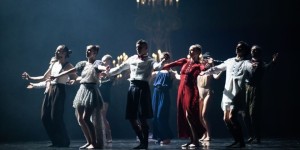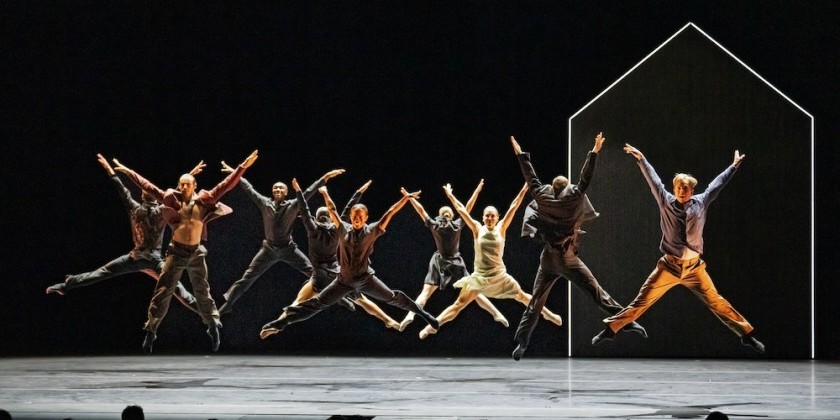Impressions of Dance Theatre of Harlem
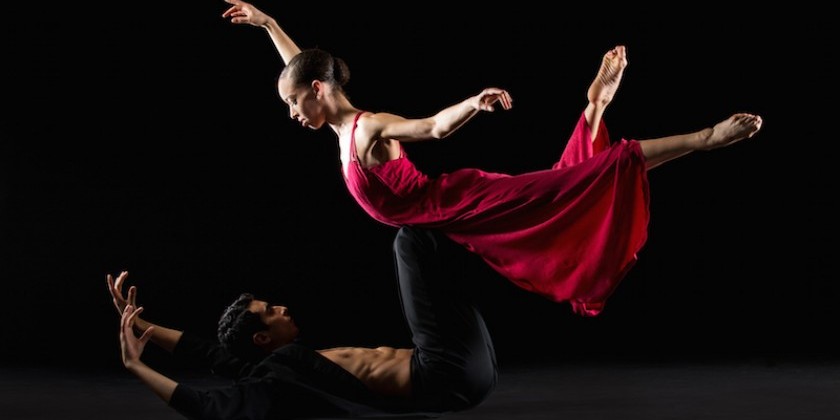
At New York City Center
Artistic Director: Virginia Johnson
Divertimento
Choreography: Elena Kunikova / Music: Mikhail Glinka
When Love
Choreography: Helen Pickett / Music: Philip Glass
Coming Together
Choreography: Nacho Duato / Music: Frederic Rzewski
Return
Choreography: Robert Garland / Music: James Brown and Aretha Franklin
New York holds a reputation for being a hub for the young and the hungry. With hopes higher than skyscrapers, fame-and-fortune seekers test their mettle against the backdrop of glass, concrete, and unchecked ambition. In 1969, Dance Theatre of Harlem was founded by one such individual: Arthur Mitchell, the first black principal dancer with New York City Ballet. Maybe it's the legacy of Mitchell or maybe it's the break the company took between 2004-2012 or maybe it's all the starry-eyed dancers on display, but during its four-piece program at New York City Center, Dance Theatre of Harlem performs like it has something to prove.
Like a protagonist in a bildungsroman, Dance Theatre of Harlem must first navigate a challenge, here in the form of Divertimento (choreography by Elena Kunikova). A tutu and toe-shoe paean to classical ballet, it is cluttered with winks and nods to the ballets that made ballet, ballet. Fish dives, a la seconde pirouettes, and endless fluttery batterie, it’s hard — too hard. Footwork proves to be the biggest issue with fifth positions remaining uncrossed and transitions from pointe to flat registering as clunky. Like all good heroes and heroines, the six dancers — their smiles unwavering — fight to save balances and land jumps softly.
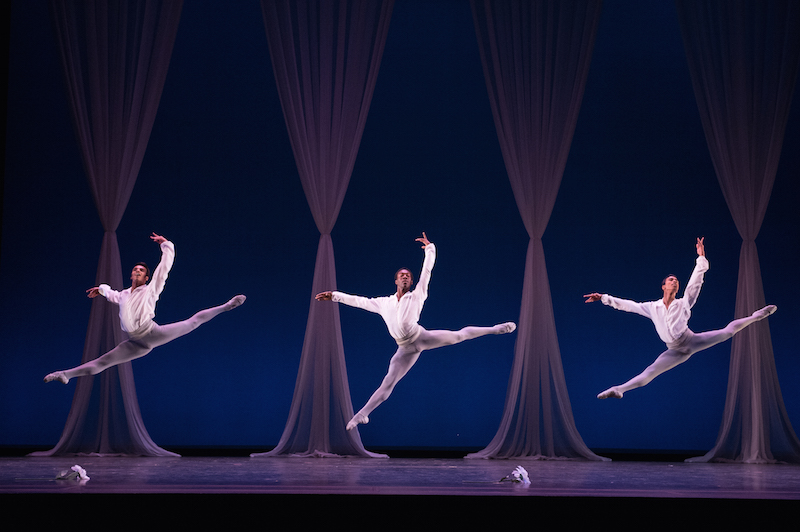
After Divertimento, the only place to go is up, and Dance Theatre of Harlem goes way up. It may be a company devoted to classical ballet, but it shows best when ballet is the root and not the flower.
A duet about romantic love is no new thing. Two bodies twining together in soaring lifts, sensual gestures, tender gazes: the dance practically choreographs itself. Performed by Stephanie Rae Williams and Da’von Doane, When Love (choreography by Helen Pickett) refreshes the obvious. A score of driving, incessant Philip Glass steadies the fervor as Williams and Doane’s bodies spark and spiral like two flames yearning for unification. Academic ballet steps have been tugged at the corners and twisted in the center, so ribs oscillate and pelvises jut. At first glance, Williams is lovely but undistinguished. Yet, as we increasingly see her through Doane’s eyes — he sits, reverently, to watch her dance, and he grins, jubilantly, at her — she becomes significant.
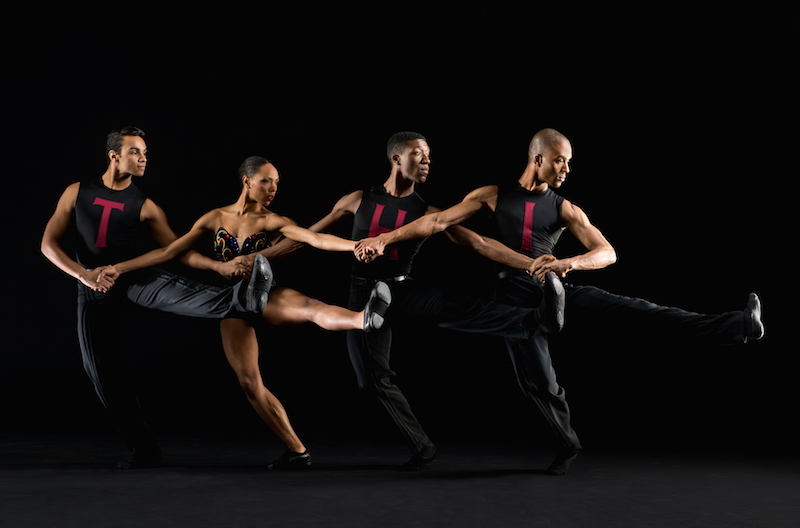
Dance Theatre of Harlem Dancers in Coming Together. Photo by Rachel Neville
The company hits its stride in Nacho Duato's formidable Coming Together. The work features many cryptic elements — an orange triangle on the backdrop, a handheld spotlight shining on two dancers, a curtain of gold foil — that probably add up to something meaningful, but the real pleasure is found in the delivery. Six men, bristling with verve, act as the frame for six fabulous women, who seemingly represent various dance styles. A trio sports long dresses like defectors from Tanztheater Wuppertal, a twosome screams Balanchine in sleek black tights and pointe shoes, and one in a biketard and jazz shoes looks like a Gus Giordano protégé. Wisps of phrases, embellished with flexed wrists or wheeling arms, ripple through the cast. The music (by minimalist composer Frederic Rzewski) surges with unquenchable urgency, driven by a repeated eight-line text.
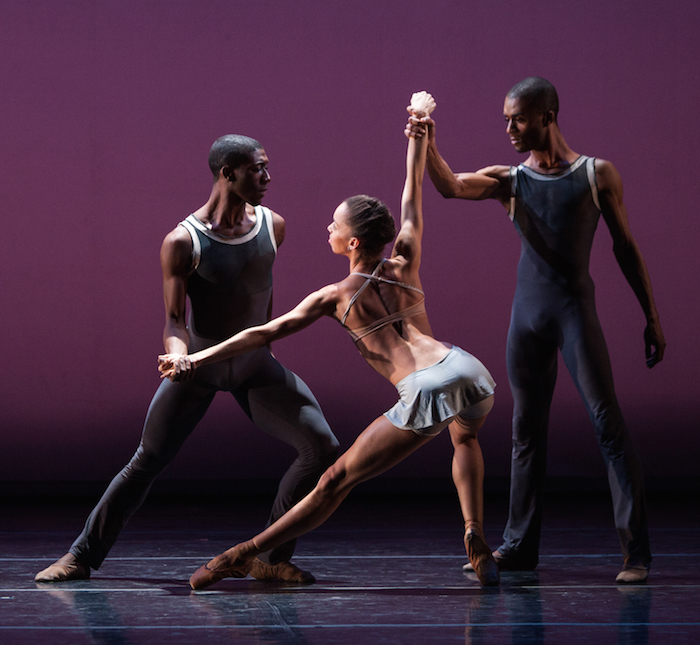
Dance Theatre of Harlem has its audience's number (I attended the family matinee, which consisted of mostly children and senior citizens) and knows to close with a bang. Return (choreography by Robert Garland) showcases the company at its finest — moving fast with virtuosic flourishes — to a medley of get-funky songs by Aretha Franklin and James Brown. Pirouettes and leaps are a particular strength, and boy, are they on exhibit here. With unflagging stamina, the dancers rocket and whirl like fireworks. Choreographed in 1999 for the company's thirtieth anniversary, Return feels like a celebration, an awesome one, to which everyone is invited.
Share Your Audience Review. Your Words Are Valuable to Dance.
Are you going to see this show, or have you seen it? Share "your" review here on The Dance Enthusiast. Your words are valuable. They help artists, educate audiences, and support the dance field in general. There is no need to be a professional critic. Just click through to our Audience Review Section and you will have the option to write free-form, or answer our helpful Enthusiast Review Questionnaire, or if you feel creative, even write a haiku review. So join the conversation.




